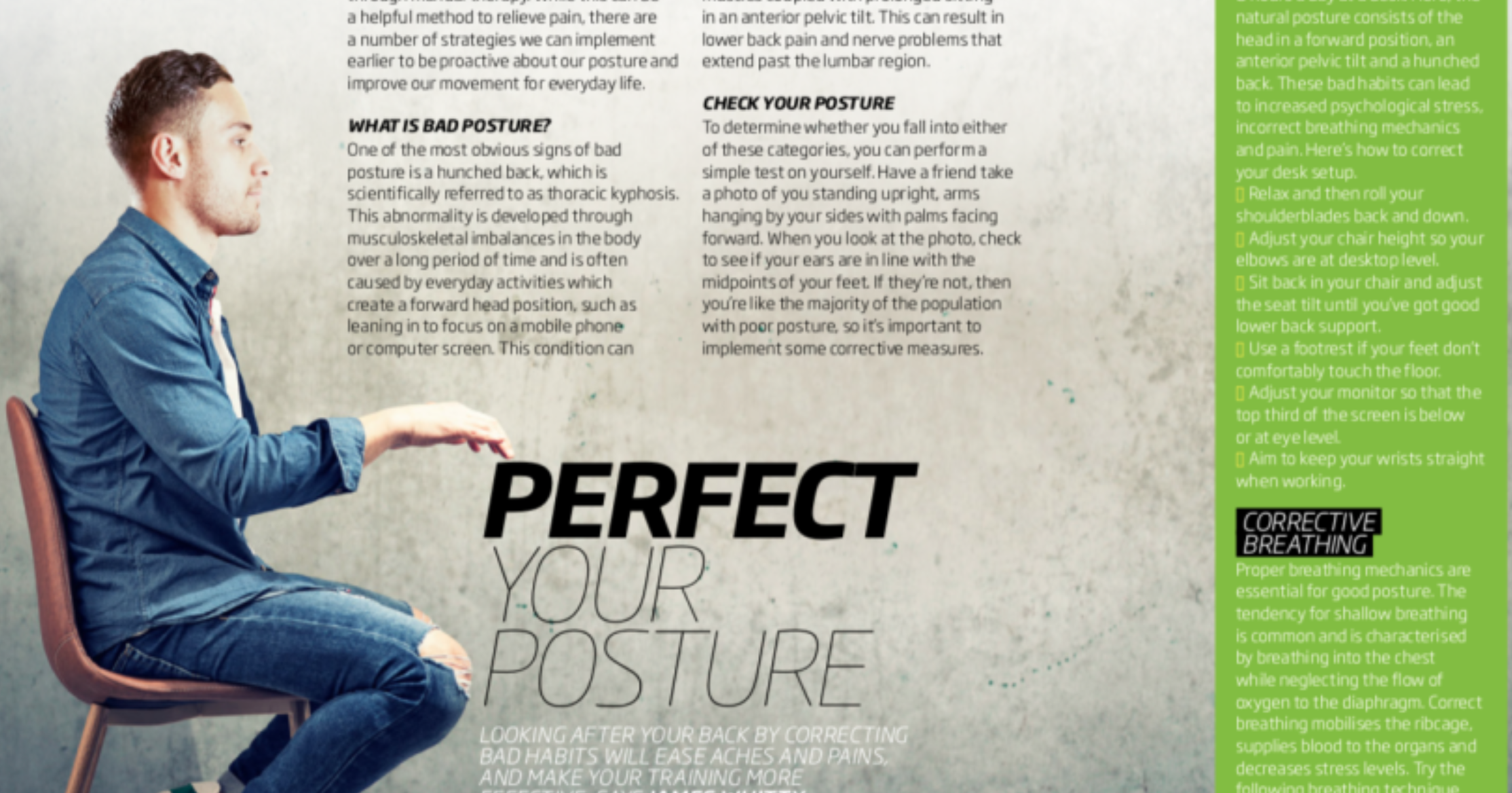
With the increase in the Australian population working in sedentary office jobs, poor posture is becoming a prominent issue.
A combination of increased pressure in office environments and a lack of education on correct movement patterns can result in a dysfunctional human body. A common reaction to this situation is to seek treatment from a physiotherapist or chiropractor through manual therapy. While this can be a helpful method to relieve pain there are a number of strategies individuals can implement earlier to be proactive about their posture and improve their movement for every-day life.
Before we can look at ways to help improve your posture, let’s identify the two most common types of poor posture that we see.
The first notable feature of someone who has poor posture is a hunched back.
In scientific terms, this is referred to as “Thoracic Kyphosis”. This abnormality is developed through musculoskeletal imbalances in the body over a long period of time. Thoracic Kyphosis is often caused by a forward head position, such as leaning in to focus on a mobile phone or computer screen. This condition results in symptoms such as aches and pains, breathing problems, gastrointestinal upsets, and increased mental stress.
Another common issue is Lumbar Lordosis.
This condition is characterized by an excessive curvature in the lower back. In an attempt to have good posture, many individuals will excessively push out their chest and butt. In reality, however, this is doing more damage than good. Lumbar Lordosis occurs from weak glute and core muscles coupled with prolonged sitting in an anterior pelvic tilt. This can result in lower back pain and nerve problems that extend past the lumbar region.
To determine if you fall into either of these categories you can perform a simple test on yourself.
Have a friend take a photo of you standing upright, arms out by your side with palms facing forward. When you observe the photo, you should look to see if your ear is in line with the midpoint of your foot. If it is not, then you are like the majority of the population with poor posture, and it is important to implement some corrective measures.
3 Preventative Strategies to Avoid Poor Posture
1. Desk Set-Up
Office workers are generally working an 8 hour day at a desk. Here, the natural posture consists of the head in a forward position, an anterior pelvic tilt, and a hunched back. These bad habits can lead to increased psychological stress, incorrect breathing mechanics, and pain.
To implement the correct desk set-up find my tips in the fitness first magazine!
2. Corrective Breathing
In conjunction with a correct desk set-up, proper breathing mechanics are essential for good posture. The tendency for shallow breathing is common and is shown by someone who generally breathes into their chest while neglecting the flow of oxygen to their diaphragm. Correct breathing allows the individual to mobilize the ribcage, supply blood to the organs, and decrease stress levels.
To implement correct breathing mechanics, follow the steps outlined in the fitness first magazine!
3. Strength Training
Once your desk is set up and corrective breathing mechanics have been established, it is important to implement strength training exercises. With a strength training program from a qualified personal trainer, you can focus on strengthening weak areas of the body to alleviate the weakness that is causing your poor posture.
The strength exercises I prescribe for good posture can be performed by anyone, find out more in the magazine!
Overcome Your Poor Posture!
There are a number of benefits that come as a result of having good posture in everyday life. Good posture decreases the chances of asymmetries and dysfunction in the human body, while also preventing muscular strain and pain. It is also a useful stress release tool and contributes to a great appearance.
If you are suffering from any type of pain and want to feel confident in the workplace, at social events, and the gym with great posture. Send me a message to receive your FREE Postural assessment. I will analyze your posture, movement, and strength. Then I will make recommendations for a plan going forward to decrease your pain and achieve the body you want!
Send me an email to [email protected] to find out more.



